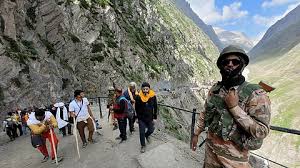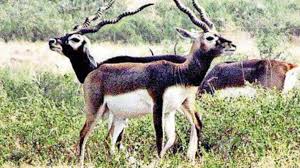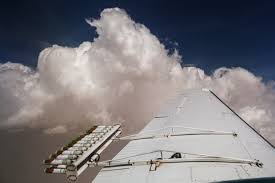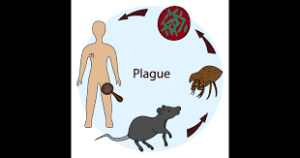Today’s Current Affairs: 12th July 2025 for UPSC IAS exams, State PSC exams, SSC CGL, State SSC, RRB, Railways, Banking Exam & IBPS, etc
Table of Contents
Operation Shiva:

The Indian Army recently launched Operation Shiva as part of a multi-tier security setup to secure the ongoing Amarnath Yatra.
- It was launched by the Indian Army to ensure the smooth and secure conduct of the Amarnath Yatra.
- The Amarnath Yatra is an annual Hindu pilgrimage to the sacred Amarnath Cave in Jammu & Kashmir (elevation ~3,888 m), where a naturally formed ice Shivling – believed to symbolize Lord Shiva – emerges.
- Operation Shiva is being carried out in close coordination with the civil administration and Central Armed Police Forces (CAPFs).
- This annual high-tempo operation aims to provide robust security architecture along both the Northern and Southern Yatra routes, particularly in light of the heightened threat from Pakistan-backed proxies in the aftermath of Operation Sindoor.
- Over 8,500 troops have been deployed, supported by a wide array of technological and operational resources.
- The operation involves “a dynamic counter-terrorism grid, prophylactic security deployment, and corridor protection measures.
- Comprehensive assistance to civil authorities is also being provided, particularly in disaster management and emergency response.
- A Counter-Unmanned Aerial System (C-UAS) grid with more than 50 C-UAS and Electronic Warfare (EW) systems each to neutralise drone threats has been set up.
- Signal companies for seamless communication, EME (Electronics and Mechanical Engineers) detachments for technical support, and Bomb Detection & Disposal Squads have been deployed.
- The Unmanned Aerial Vehicles (UAVs) are being deployed on regular missions and live monitoring of Yatra routes and the Holy Cave.
- Engineer task forces have also been deployed for bridge construction, track widening, and disaster mitigation, with more than 150 doctors and medical personnel, two advanced dressing stations, nine medical aid posts, a 100-bed hospital, and 26 oxygen booths supported by 2,00,000 litres of oxygen.\
- By implementing live tracking of yatra convoys between Jammu and the holy cave, the Army is maintaining constant situational awareness through high-resolution PTZ camera and drone feeds.
Blackbuck : Population declined

Wildlife officials admit that the population of black bucks has declined sharply over the years in the Abohar Wildlife Sanctuary, Punjab.
- Blackbuck is a species of antelope native to India and Nepal.
- Scientific Name: Antilope cervicapra
- It is widespread in the states of Rajasthan, Gujarat, Madhya Pradesh, Tamil Nadu, Odisha, and other areas throughout peninsular India.
- It has been declared as the state animal by the governments of Punjab, Haryana, and Andhra Pradesh.
- The blackbuck mostly lives in open grasslands, dry scrub areas, and thinly forested areas.
- They are covered with dark brown or black, sleek fur. The chest, belly, muzzle, and chin of the males are covered in white fur.
- The eyes of the males are covered in white rings.
- They have very good eyesight and are also very fast runners, which comprise its main defense against predators.
- Conservation status: IUCN Red List: Least concerned
- Wildlife Protection Act of 1972: Schedule I
- CITES: Appendix III
Sanchar Mitra Scheme:

The Department of Telecommunications (DoT), Government of India rolled out Sanchar Mitra Scheme nationwide to empower youth as digital ambassadors.
- It is focuses on student volunteers designated as Sanchar Mitras will be empowered to raise awareness among the public about key telecom issues.
- Under this scheme Sanchar Mitras will raise awareness about issues, such as digital safety, cyber fraud prevention, and EMF radiation concerns, while also promoting responsible mobile usage and digital literacy.
- The expanded Sanchar Mitra Scheme not only aims to enhance public awareness but also provides participating students with exposure to cutting-edge telecom technologies including 5G, 6G, Artificial Intelligence, and Cyber Security.
- Through structured training, project participation, and engagement with real-world telecom initiatives, the scheme seeks to build a digitally aware, skilled, and research-oriented youth workforce.
- Participating institutions will be identified in consultation with local DoT field units, and students from relevant academic backgrounds—telecom, electronics, computer science, cyber security—will be nominated as Sanchar Mitras.
- Sanchar Mitras will receive necessary training from experts from field and from the National Communications Academy–Technology (NCA-T) and DoT’s Media Wing.
- Sanchar Mitras will carry out grassroots-level awareness drives, engage with communities and NGOs, and act as catalysts for informed digital behavior in their surroundings.
- To encourage excellence, participants will be assessed periodically based on innovation, consistency, and outreach impact.
- Outstanding performers may be offered exclusive opportunities including internships, involvement in national telecom projects, participation in high-level forums such as India Mobile Congress, and engagements with ITU standards and policy work.
Machine Vision Based Inspection System:

Indian Railways has signed a Memorandum of Understanding (MoU) with the Dedicated Freight Corridor Corporation of India Limited (DFCCIL) for the installation of Machine Vision Based Inspection System (MVIS).
- It is a modern, cutting-edge technology that uses Artificial Intelligence to inspect trains in real time.
- The system would revolutionise the way trains are maintained and monitored, offering a smarter, safer, and efficient future for Indian train travel.
Working of Machine Vision Based Inspection System: - It is deployed on a wayside that captures high-resolution images of the under-gear of moving trains and automatically detects any hanging, loose, or missing components.
- On detecting anomalies, the system generates real-time alerts to facilitate prompt response and preventive action.
- It combines high-resolution cameras with intelligent software to scan every passing train for signs of wear and tear.
- From detecting hairline cracks and loose fittings to identifying other mechanical abnormalities, the system conducts inspections within seconds, which earlier took hours or even days to complete.
- By catching faults early, the technology prevents potential breakdowns, enhances safety, and helps avoid train delays.
- It will help in monitoring the health of rolling stock.
- The primary advantage of MVIS is its ability to carry out consistent monitoring without disrupting regular train services.
- This initiative also aligns with IR’s broader objective of introducing modern, intelligent systems to the railway ecosystem.
Mount Rainier:

An earthquake swarm began at Mount Rainier recently, with the region hit by more than 300 small quakes, the most significant seismicity at the volcano since 2009, the US Geological Survey (USGS) reported.
- It is the highest mountain (4,392 metres) in the state of Washington, United States.
- Covering 260 sq.km, Rainier is surrounded by the largest single-mountain glacier system in the United States outside Alaska.
- The mountain is geologically young, formed by successive lava flows from eruptions that began about one million years ago.
- It is an active stratovolcano. The volcano last erupted about 150 years ago.
- It is considered among the most dangerous volcanoes in the world due to its proximity to the densely populated urban area of Seattle.
- Rainier is one of just 16 volcanoes in the world to be on the “Decade Volcanoes” list, a classification created by the International Association of Volcanology and Chemistry of the Earth’s Interior (IAVCEI) to highlight volcanoes worthy of close monitoring because of the catastrophic effects of their potential eruption.
- Some two dozen named glaciers and a number of smaller patches of permanent ice and snow radiate from the broad summit, including Nisqually
- Glacier, whose retreat and advance over the last 150 years has helped scientists determine patterns in Earth’s climate.
- The mountain has three major peaks: Liberty Cap, Point Success, and Columbia Crest (the latter is the summit, located on the rim of the caldera).
- Rainier is noted for dense stands of coniferous trees on its lower slopes, scenic subalpine and alpine meadows—with a profusion of wildflowers during the warmer months—waterfalls and lakes, and an abundance of wildlife.
Cloud Seeding : In News

In the wake of disastrous floods in Texas, concerns about cloud seeding technology have run rampant.
- Cloud Seeding is the deliberate introduction into clouds of various substances that act as condensation nuclei or ice nuclei in an attempt to induce precipitation.
- The first experiments with cloud seeding were conducted in 1946 by American chemist and meteorologist Vincent J. Schaefer, and since then seeding has been performed from aircraft, rockets, cannons, and ground generators.
- Many substances have been used, but solid carbon dioxide (dry ice) and silver iodide have been the most effective.
- When used in supercooled clouds (composed of water droplets at temperatures below freezing), they form nuclei around which the water droplets evaporate.
- The resulting water vapour deposits into ice crystals, which build quickly as water droplets attach themselves.
- In clouds at temperatures above freezing, calcium chloride particles provide the condensation nuclei around which raindrops form.
A resident of north Arizona,United States, recently died from pneumonic plague:

A resident of north Arizona,United States, recently died from pneumonic plague, marking the first death in the region in 18 years.
- Plague is an infectious disease caused by a specific type of zoonotic bacteria called Yersinia pestis.
- This disease usually spreads through bites from fleas that previously bit an infected animal.
- Plague is infamous for killing millions of people in Europe during the Middle Ages.
- Nowadays, it is a rare but persistent cause of illness in rural areas in the western United States and certain regions of Africa and Asia.
- There are three types of plague. Bubonic plague infects your lymph nodes, septicemic plague is in your blood and pneumonic plague affects your lungs.
- Pneumonic plague, which spreads to the lungs from other untreated forms of plague, is the most serious and is usually rare.
- Plague can be a very severe disease in people, with a case-fatality ratio of 30% to 60% for the bubonic type, and is always fatal for the pneumonic kind when left untreated.
- Plague can be cured with antibiotics, but these must be given promptly to prevent serious illness or death.
Bhadrakali Lake:
Activists urge the Telangana government to rethink island development in Bhadrakali Lake amid lake shrinkage concerns.It is an artificial lake located in Warangal, Telangana.It covers an area of approximately 32 acres. The lake stretches to 2 km in distance.It is believed to have been built during the 12th century by the Ganapati Deva of the Kakatiya dynasty.The lake is connected to the Maneru Dam via the Kakatiya Canal and was initially formed for drinking water resources. The main highlight of the lake is the Bhadrakali Temple, located on one of the islands within the lake.
Blood Money:
A nurse from Kerala, sentenced to death in Yemen for the 2017 murder, may be saved by ‘Diyah’ (blood money) under Islamic sharia law. Under the Islamic Sharia law, blood money, or ‘diya’, means that the accused provides financial compensation to the family of the victim in serious crimes such as murder. It is followed in countries that incorporate these laws in their legislation. The custom is practised predominantly in cases involving unintentional murder and culpable homicide. It is also invoked in murder cases wherein the victim’s kin choose not to retaliate through ‘qisas’ (a way of retribution under the Sharia). The end-goal, as the law says, is not to put a price tag on human life but to alleviate the plight and suffering of the affected family and their potential loss of income.
National Health Claims Exchange:
The government is preparing to bring the National Health Claims Exchange, currently managed by the Health Ministry, under the joint supervision of the Finance Ministry and the Insurance Regulatory and Development Authority of India (IRDAI). NHCX is developed under the Ayushman Bharat Digital Mission (ABDM) by the National Health Authority (NHA) in consultation with the Insurance Regulatory and Development Authority of India (IRDAI).
NHCX aims to streamline and standardize health insurance claim processing, enhancing efficiency in the insurance industry and improving the patient experience. NHCX serves as a gateway for exchanging health claim information among insurers, third-party auditors, healthcare providers, beneficiaries, and other relevant entities and ensures interoperability, machine-readability, auditability, and verifiability, making the information exchange accurate and trustworthy.
e-Truck Incentive Scheme:
The Union Minister for Heavy Industries, Government of India, has launched a groundbreaking scheme to provide financial incentives for electric trucks (e-trucks) under the PM E-DRIVE initiative.It aims to reduce operational costs for transporters, encourage clean energy adoption in the heavy vehicle segment, and enhance air quality in urban and industrial regions bringing India closer to a sustainable, low-carbon future. It helps to accelerate India’s transition to clean, efficient, and sustainable freight mobility. It is the first time the Government of India is extending direct support for electric trucks.
Maratha Military Landscapes of India:
‘Maratha Military Landscapes of India’ got inscribed on the UNESCO World Heritage List, becoming India’s 44th property to receive this recognition.Spanning from the 17th to 19th centuries CE, this extraordinary network of twelve forts demonstrates the strategic military vision and architectural ingenuity of the Maratha Empire. These 12 forts are spread across the states of Maharashtra and Tamil Nadu, which include Salher, Shivneri, Lohgad, Khanderi, Raigad, Rajgad, Pratapgad, Suvarnadurg, Panhala, Vijaydurg, and Sindhudurg in Maharashtra, along with Gingee Fort in Tamil Nadu.
Among these forts Shivneri fort, Lohgad, Raigad, Suvarnadurg, Panhala fort, Vijaydurg, Sindhudurg and Gingee fort are protected under the Archaeological Survey of India and Salher fort, Rajgad, Khanderi fort and Pratapgarh are protected by the Directorate of Archaeology and Museums, Government of Maharashtra. These are located across a range of diverse terrains—from coastal outposts to hilltop strongholds.
Revival of Lotus in Wular Lake:
After three decades of ecological dormancy caused by the 1992 flood, lotus flowers have once again begun blooming in Kashmir’s Wular Lake due to focused conservation efforts led by Wular Conservation and Management Authority (WUCMA). Lotus stems (locally called Nadru) couldn’t grow since 1992 as seeds were buried under heavy silt, but the rhizomes (creeping root stalks) survived deep below and sprouted once the silt was removed.
Wular Lake is the largest freshwater lake in India and the second largest in Asia (after Lake Baikal in Siberia, Russia), located between Bandipora and Sopore in Jammu & Kashmir.
The International Criminal Court (ICC) has issued arrest warrants against Taliban leaders:
The International Criminal Court (ICC) has issued arrest warrants against Taliban leaders under Article 7(1)(h) of the Rome Statute for crimes against humanity, citing systematic gender and political persecution in Afghanistan.ICC is the world’s first permanent international court established to prosecute individuals for the most serious crimes of global concern. It is headquartered in Hague, Netherlands and governed by the Rome Statute, which is the founding treaty of the ICC, adopted on 17th July 1998 and entered into force on 1st July 2002. The Rome Statute grants the ICC jurisdiction over 4 core international crimes- Genocide, Crimes against Humanity, War Crimes, Crime of Aggression. The ICC prosecutes individuals, not states, for grave international crimes and cover crimes committed after 1st July 2002, the date the Rome Statute came into effect. It acts only when national jurisdictions are unwilling or unable to prosecute. The Court has jurisdiction in countries that are parties to the Rome Statute, or in non-member states if referred by the UN Security Council (UNSC).
TN – KET Program:
Tamil Nadu has significantly reduced TB-related deaths by implementing the TN-KET (TB Death-Free Initiative) using a simple triage tool and a differentiated care model.TN-KET (Kasanoi Erappila Thittam) is a state-level TB mortality reduction initiative launched by Tamil Nadu in 2022, focused on early detection and differentiated care for severe TB cases.
India 44th World Heritage Site Maratha Military Landscapes of India:
At the 47th Session of the UNESCO World Heritage Committee in Paris, the Maratha Military Landscapes of India was inscribed as India’s 44th World Heritage Site, marking a historic recognition of India’s fortified legacy.A network of 12 strategic forts built between the 17th–19th centuries CE showcasing the military ingenuity of the Maratha Empire known for their adaptability, architecture, and command over diverse terrains.
Operation Fire Trail:
In a major anti-smuggling action, the Directorate of Revenue Intelligence (DRI) seized ₹35 crore worth of banned Chinese firecrackers during “Operation Fire Trail” across Indian ports. Operation Fire Trail is a special intelligence-led enforcement operation launched by the DRI to crack down on illicit imports of Chinese firecrackers, posing environmental, legal, and safety risks. Launched by: Directorate of Revenue Intelligence (DRI), India’s premier anti-smuggling agency under the Central Board of Indirect Taxes and Customs (CBIC). Objective is to detect and intercept illegal consignments of restricted explosives, especially Chinese fireworks,Prevent misuse of SEZs (Special Economic Zones) for unauthorized diversion into the Domestic Tariff Area (DTA), Ensure compliance with India’s Foreign Trade Policy and Explosive Rules, 2008.
Akash Missile System:
Brazil has reportedly halted negotiations with India to acquire the Akash missile system.It is a Short Range Surface to Air Missile (SAM) system to protect vulnerable areas and vulnerable points from air attacks. The AKASH Weapon System can simultaneously engage Multiple Targets in Group Mode or Autonomous Mode. It has built-in Electronic Counter-Counter Measures (ECCM) features. It is fully automatic, with a quick response time from target detection to kill. The entire weapon system has been configured on mobile platforms.It was indigenously designed and developed by India’s Defence Research and Development Organisation (DRDO) and is produced by Hyderabad-based Bharat Dynamics Ltd. (BDL).
MeitY launched whitepaper titled Transitioning to Quantum Cyber Readiness:
The Ministry of Electronics and IT (MeitY), along with CERT-In and SISA, launched a whitepaper titled “Transitioning to Quantum Cyber Readiness” to guide India’s shift towards quantum-safe cybersecurity. A strategic document providing a roadmap to help public and private institutions migrate from traditional encryption to quantum-resistant algorithms.




